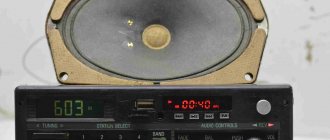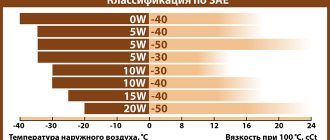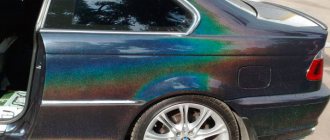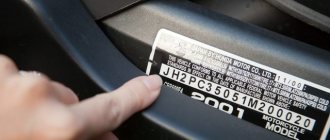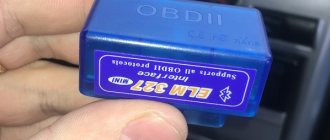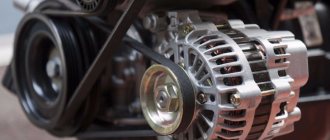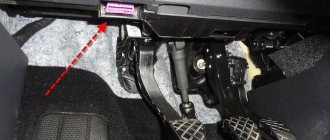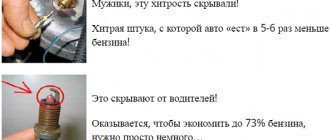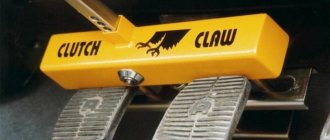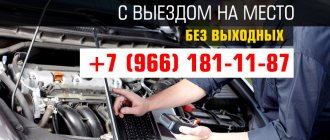What is ELM327 v.1.5?
Perhaps the most important and common question that worries buyers. We will try to give a detailed answer to it. The “original” ELM327 is a chip released to the market in the early 2000s by the Canadian company Elm Electronics, based on the PIC18F2480 microcontroller from the American manufacturer Microchip Technology. This chip converted the protocols used in vehicle diagnostic buses into the RS-232 protocol.
The cost of devices based on the “original” North American chip starts from 50 USD. and reaches 500, the price of the PIC chip itself is around 2000 rubles. Scanners based on the original ELM327 are designed for corporate consumers; they can be found at large service stations and branded technical centers. Where did the mass-produced cheap models of ELM327 scanners and adapters come from, which have become so widespread among ordinary car owners and amateur repairmen?
The fact is that when Elm Electronics released the first version of its ELM327, Canadians, for unknown reasons, did not activate copy protection on the device. And the software (firmware) of the chip was immediately “read” by Chinese craftsmen. What happened next was a matter of technique. The Chinese craftsmen, we must give them their due, managed to “stretch” the free firmware they received onto a cheaper and more widespread PIC18F25K80 microcontroller, similar in architecture, but costing several times less. They did this so well that scanners with such a chip were able to work quite reliably with the vast majority of ECUs (electronic on-board units) of modern cars. Therefore, when today they talk about OBDII scanners and adapters on the ELM327 chip, they mean Chinese chips. Working with the original ELM327 was left to the professionals. The version of the most common Chinese firmware on the PIC18F25K80 microcontroller is called ELM327 v. 1.5 and is “almost analogous” to the original Canadian firmware ELM327 v1.4b.
ELM327 V1.5 Wireless Bluetooth OBD-II Car Scanner Auto Diagnostic Tool
The product was received from BuySKU.com free of charge for testing.
An OBDII Bluetooth adapter ELM 327 came to me. Let me explain to those who don’t know anything about these letters - this is a car scanner for diagnostics using the OBDII protocol (the protocol supports most modern cars).
I would immediately like to express my respect to the Singapore Post Office - the scanner was on the way for 12 (!!!) days (to Gomel, Belarus). This is the second time I have encountered Singapore Post and this service does not disappoint.
In addition to the bubble envelope, the scanner was packed only in a zip bag, which also contained a mini-CD (oddly enough, the disc was not damaged), the contents of which will be posted below.
The scanner itself (or the adapter - it hurts the ears the least) is assembled very high quality, nothing creaks, does not wobble, the contacts are all firmly installed, there is not an ounce of play. To be honest, I didn’t expect it, because from the photos in stores you can clearly see a translucent case, which usually doesn’t inspire confidence. But in practice it turned out that all parts of the product are made of non-rigid plastic that does not rattle or crack during use.
I’ll also make a reservation right away that the scanner fits into the car connector very confidently, does not wobble and will not fall out on any bumps (this is if someone is going to drive with it periodically).
There are three LEDs on the body:
— red Power (lights up when the scanner is connected to the car connector and lights up constantly);
— green OBD (blinks when reading information from the car);
— orange PC (blinks when transmitting data via Bluetooth).
There is also a warranty seal)).
But this is all lyrics. I think that everyone who orders such things expects something else from them, namely specific results when diagnosing a car. First of all, for the scanner to connect with the car.
So, the car chosen for testing was a Ford Focus (European) 1.6 Zetec-SE, automatic transmission.
Software: For Windows 7 (ASUS K52N): - ScanMaster-ELM v2.1; — ScanXLProfessional v3.2.1 Build1865; — VitalScan v1.3; — ProScan v5.9; - Digimoto.
I will also provide links to similar software, which I have not yet tested in conjunction with this scanner:
— FORScanSetup v0.9.2 beta (for Ford cars);
And, as promised above, the contents of the included CD.
For Symbian OS 9.4 (Nokia X6):
- obd-scope v1.
All programs successfully connected to the scanner and also successfully read all the information that the car’s ECU “gave”.
I'll go through some programs and provide screenshots. I'll start with the phone. To be honest, I didn’t know that there were programs for Symbian OS that work with similar scanners, but I still came across it by accident. The connection occurs without any obstacles except the security code ( code 1234
, was picked up the third time). I was even able to display instantaneous fuel consumption on the smartphone (I’ll make a reservation that I was only able to get it in one program on my laptop; the others say that the car doesn’t support the function).
Under Windows 7, in principle, one program will be enough - ScanMaster-ELM
, because the rest of the software repeated ScanMastera’s information, or displayed it in rather small quantities.
ScanMaster
General status window showing the progress of connecting to the scanner
System status, where you can see supported and unsupported vehicle parameters
Screenshot of reading error codes (they were not detected for me, ugh*3). I’ll make a reservation here that some programs can reset errors, but, of course, not all.
Live data table - many vehicle parameters are displayed by pressing the “read” button, updated online before pressing the “stop” button.
We can say that this is a repetition of operational data, but in a more colorful format)), - four windows, the displayed values in which are selected from a drop-down list.
Again, repetition of operational data, but in the form of graphs, the displayed values are again selected from the drop-down list.
You can also display an improvised instrument panel on the laptop screen, which will also display parameters in real time.
And this is instantaneous fuel consumption; the car was idling and not in motion. Perhaps this is why fuel consumption is presented in liters/hour.
I would also like to draw your attention to the ScanXL Professional program, which, like ScanMaster, is replete with its capabilities and, as you can see from the first screen, can delete error codes.
It is also possible to display information in the form of a dashboard.
Digimoto is a small program that “loves” to build graphs based on specified parameters. Its functionality seemed somewhat limited to me.
But here I moved a little away from the subject of the review. And by the way, he worked without problems with any software that I palmed off on him, be it Windows, Symbian or Android. By the way, for Android there is the well-known Torque, which is also not lacking in functionality and, if you have an Android smartphone, can successfully serve as an on-board computer. Unfortunately, it was not possible to test it due to the lack of an androphone.
In total, we have an excellent device for home use, which will help you subsequently save money (and, with a certain mindset, make money) on cheap diagnostics, and will also help prevent expensive repairs if you check your friend’s basic parameters more often)) and respond to their changes in a timely manner.
What is OBDII and OBDII “adapter”
OBD-II (On-board diagnostics, second version) is an on-board diagnostics standard, which is a development of the first version, created at the end of the last century. The standard allows you to gain control and insight over the condition of the engine and many other components of the car. This specification offers a standard interface for connecting sensors inside the machine and external devices that connect to a 16-pin diagnostic block (DLC). Code scanners and devices called OBDII adapters can be connected to this block, which can be found in any car manufactured after 1991.
These are miniature devices that convert signals from sensors and communicate through a wired or wireless interface with “smart” digital devices - computers, smartphones and tablets. Smart devices, in turn, using installed programs, provide information about the state of the engine in a form that is convenient and understandable for the user. Example of a wireless (Bluetooth) adapter – Mini OBD II Bluetooth ELM327 V1.5
If you have already realized that all ELM327 adapters priced up to 1000 rubles are Chinese revisions of the original, let's go further and tell you about the ELM327 V2.1 version. After 2014, Chinese manufacturers launched adapters with MCP2515, BK3231Q and some others chips, even cheaper than PIC18F25K80. For these microcontrollers they had to rework their existing 1.5 firmware (creating custom software for them is too difficult). Without hesitation, they called the “new” OBD II adapter ELM327 v. 2.1. The resulting device had a limited range of applications, in particular, there were real difficulties with compatibility with car models produced before the 2010s.
Here's what you need to remember: Chinese OBD II devices ELM327 v. 2.1. are not vertically compatible and do not “inherit” ELM327 v. 1.5. A large number in the version marking does not mean that the adapter will work “better”. This is purely a marketing move that remains on the conscience of the Chinese.
Classification of scanners and features of their use
To determine error codes, you will need a special scanner. It is often called simply an autoscanner. On sale you can find both budget models and quite expensive ones. The price is determined based on the functionality of such a device and some additional elements. Here's what a scanner can do and what extras it can do. functions have:
- Determination of error codes during diagnostics;
- Recoding of the control unit;
- Control unit adaptation;
- Connecting and working with a tablet, computer, endoscope, oscilloscope, etc.
A decent technical center has several professional scanners. For example, they support work with ADAS systems - budget devices cannot be connected even to an oscilloscope. Some models are even full-fledged diagnostic tools with a built-in tablet, an advanced database, communication devices (Wi-Fi, Bluetooth) and much more. The average car enthusiast can get by with a simpler scanner with the ability to connect via RS232 and USB . There are these types of scanners:
- Autonomous . Those same professional diagnostic tools. Can be paired with other devices, but this is not a required feature. Main disadvantages: high cost, difficulty in updating software;
- Scanners-adapters (adapters-specifiers, scanners). Devices that require additional gadgets for full operation. They have limited functionality, which is supplemented by third-party gadgets.
Scanners are also divided into dealer, brand and multi-brand. For ordinary car enthusiasts, it is best to take a branded or multibrand car scanner - they have an affordable price tag, and the latter are also distinguished by their versatility. Here's what you need to do to work with such devices with a laptop at hand:
- Connect the scanner to the DLC connector;
- Download specialized software to your laptop. ScanMaster is great;
- Optionally, install a special driver. If your laptop does not have a Bluetooth module, buy and insert a special wireless module into the USB connector;
- Go to the control panel and turn on Bluetooth from the “Bluetooth Devices” section (may require installing another driver);
- Check the box in the “Add device” panel;
- Wait for the scanner to pair with the laptop;
- Continue working on the laptop - you will have to understand the interface of the selected diagnostic program. Don’t worry, even an inexperienced user can get the codes. Attention: do not use additional program functions if you do not need them.
The algorithm for working with the scanner will depend on the model. Above we mentioned the DLC connector (English: Data Link Connector). There are only two of them: DLC 1, DLC 2. The first connector is under the hood. As a rule, on the left side of the engine compartment. Next to it you can see the inscription “Diagnostic”. It is to this connector that you need to connect the scanner. The second connector goes directly into the vehicle interior. All modern cars have a DLC 2 connector - it is the easiest to connect a scanner to. If you don't want to use a laptop to troubleshoot errors, almost any Android or iOS device can replace it. Preferred diagnostic software: Torque, OBD Car Doctor, FourStroke.
Conclusion
Reading and decoding error codes of the electronic control unit can greatly simplify the search for faulty vehicle components. To obtain codes, a car owner only needs to have a scanner-adapter or a professional diagnostic device, as well as a laptop, tablet or smartphone. Due to the fact that most error codes are standardized, there will be no problems deciphering them. But if they arise, it will be enough to turn to specialized materials or thematic forums. And also study our next material - in it we consider the most common ECU errors, the malfunctions that lie behind them, as well as troubleshooting methods.
